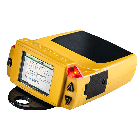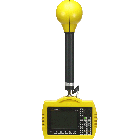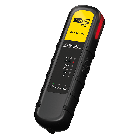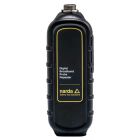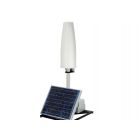Narda FieldMan Electromagnetic Field Meter
Easy to use EMF Meter capable of measuring high and low frequency electric and magnetic fields up to 90 GHz.

Narda FieldMan Electromagnetic Field Meter Overview
Designed to be used with a range of Narda probes, the Narda FieldMan Electromagnetic Field Meter is a radiation meter capable of providing reliable omnidirectional measurements of both high and low frequency electromagnetic fields from 0 Hz (DC) to 90 GHz.
The Narda FieldMan features an intuitive user interface with built-in climate sensors to measure temperature, air humidity, pressure and height above ground. The compact design enables single-handed operation and boasts IP 54 class protection, making the Narda FieldMan Electromagnetic Field Meter suitable even in adverse weather conditions.
With its broad measurement range, the Narda FieldMan Electromagnetic Field Meter is sensitive enough to be used in locations such as schools and kindergartens, helping with meeting regulations. The ultrasonic distance meter measures the instrument’s height above the ground with precision, making the device easy to use.
The Narda FieldMan Electromagnetic Field Meter has multiple operating modes and can be equipped with probes that allow it to cover practically every application within the 0 Hz (DC) to 90 GHz frequency range. This includes:
- Establishing safe zones
- Meeting accident prevention regulations
- Managing the field strength near radar and broadcasting equipment
- Measuring field strengths in industrial environments
- Demonstrating electromagnetic compatibility (EMC)
The Narda product range is available exclusively in Australia from Air-Met Scientific. Contact your local Air-Met office for more details.
Narda FieldMan Electromagnetic Field Meter Features
Reliable Measuring
- Omnidirectional measurements of 0 Hz (DC) to 90 GHz ranged frequencies
- Environmental sensors store temperature, pressure and humidity data
- IP 54 class protection with sturdy casing allows use in harsh weather conditions
- Includes the Narda-TSX PC software
- Six different operating modes that allow the device to cover various applications
User Friendly
- Intuitive operating menu
- Ergonomically structured handle allows for one-handed operation
- Voice and text comments can be attached to results
- Location data, photos and videos can be added
- The measuring device doesn’t need to be calibrated, only the probe needs to be
- The stand can be used to position the device high or low
- Built-in climate sensors
- Ultrasonic distance meter (0.25 m to 4 m)
- Anti-glare display that can be easily read even in harsh sunlight or poor lighting
- Rapid data transmission through USB-C, microSD card, optical RP-02 and Gigabit Ethernet
Narda FieldMan Electromagnetic Field Meter Applications
- Establishing safe zones
- Meeting accident prevention regulations
- Managing the field strength near radar and broadcasting equipment
- Measuring cell phone transmitters and satellite communication systems’ field strengths to comply with human safety standard limit values
- Measuring field strengths in industrial environments including plastics welding, RF heating, tempering and drying equipment
- Protecting users from high frequency radiation medical devices
- Demonstrating electromagnetic compatibility (EMC) by measuring field strength in TEM cells and absorber chambers
- Sensitive locations such as schools and kindergartens
- Leakage locating
- Automotive operations
- Energy supply systems
Narda FieldMan Electromagnetic Field Meter Support Documents
Narda FieldMan Probe HFD-0191 Datasheet
Narda FieldMan Probe EFD-9091 Datasheet

